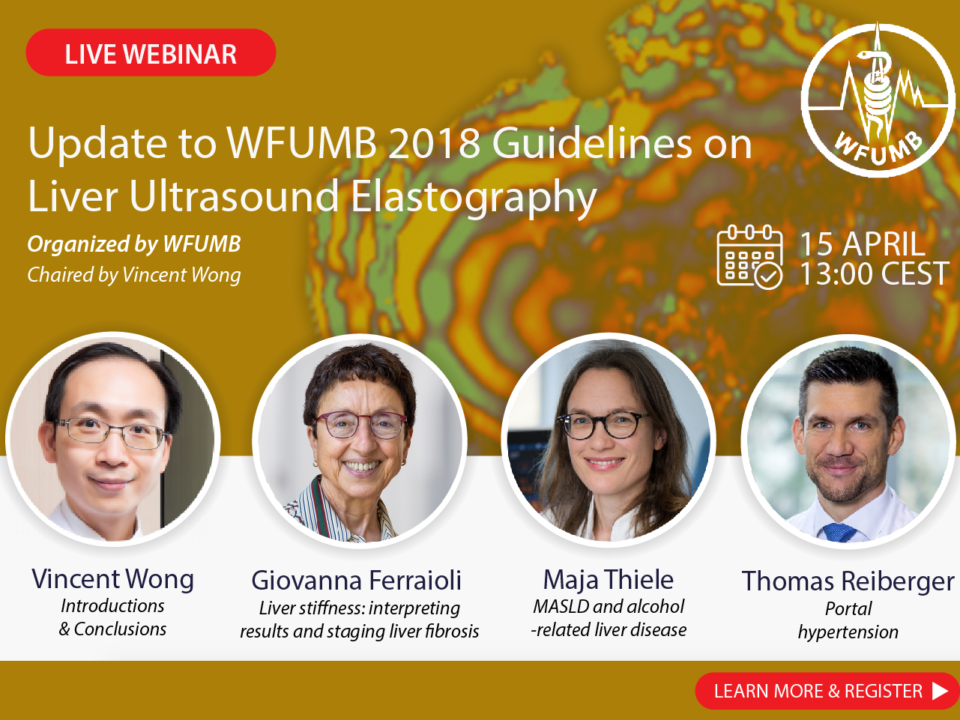- WFUMB Stands with EFSUMB: stop bloodshed in Ukraine - read our statement here >
Abdominal Aortic Aneurysm Quiz- Case 20
Abdominal Aortic Aneurysm Quiz- Case 19
April 9, 2020
Case of the Month May 2020- Jaundice in an infant
May 1, 2020Quiz-summary
0 of 2 questions completed
Questions:
- 1
- 2
Information
You have already completed the quiz before. Hence you can not start it again.
Quiz is loading...
You must sign in or sign up to start the quiz.
You have to finish following quiz, to start this quiz:
Results
0 of 2 questions answered correctly
Time has elapsed
Categories
- Not categorized 0%
-
That completes all cases
- 1
- 2
- Answered
- Review
-
Question 1 of 2
1. Question
Clinical Description:
A 90 year old non English speaking patient presenting with abdominal pain and a pulsatile mass. Normal haemodynamic parameters.
What is your diagnosis?
Correct
After an endoluminal graft repair all bloodflow is ideally excluded from the AAA allowing thrombosis of the AAA outside of the stent graft. An endoleak is an area of the AAA that has been excluded by the endoluminal graft that nonetheless continues to have bloodflow. With an endoleak a treated aneurysm may continue to grow and eventually rupture. Signs of an endoleak can include flow seen outside the graft lumen or an increasing size of the aneurysm post repair. However, ultrasound is not sensitive and the signs can be subtle. Pulsatility of the sac reduces post repair, but still occurs even without an endoleak.
Incorrect
After an endoluminal graft repair all bloodflow is ideally excluded from the AAA allowing thrombosis of the AAA outside of the stent graft. An endoleak is an area of the AAA that has been excluded by the endoluminal graft that nonetheless continues to have bloodflow. With an endoleak a treated aneurysm may continue to grow and eventually rupture. Signs of an endoleak can include flow seen outside the graft lumen or an increasing size of the aneurysm post repair. However, ultrasound is not sensitive and the signs can be subtle. Pulsatility of the sac reduces post repair, but still occurs even without an endoleak.
-
Question 2 of 2
2. Question
Clinical Description:
A 90 year old non English speaking patient presenting with abdominal pain and a pulsatile mass. Normal haemodynamic parameters.
What investigation is the Imaging modality of choice to diagnose endoleaks?
Correct
A contrast enhanced multiphase CT examination is used to diagnose the specific type of endoleak and should be the initial choice of investigation if a postoperative complication is suspected. There are 4 types of endoleaks of which two require immediate treatment when diagnosed. Endoleaks occur in approximately a third of AAA’s treated with endoluminal grafts and generally patients have yearly routine imaging surveillance.
Incorrect
A contrast enhanced multiphase CT examination is used to diagnose the specific type of endoleak and should be the initial choice of investigation if a postoperative complication is suspected. There are 4 types of endoleaks of which two require immediate treatment when diagnosed. Endoleaks occur in approximately a third of AAA’s treated with endoluminal grafts and generally patients have yearly routine imaging surveillance.



